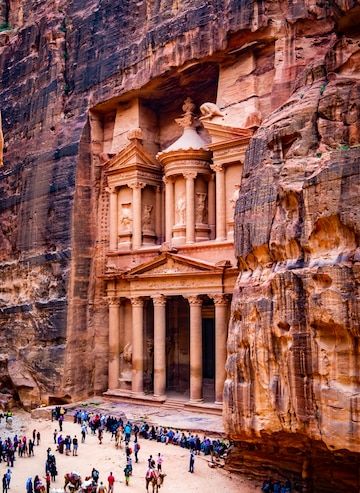
How Culture and Heritage Tourism Boosts More Than A Visitor Economy?
It is easy to understand why heritage tourism has become one of the most well-liked travel experiences in recent years. Many find it very interesting to see historical sites, hear from locals about their experiences there, and discover the customs of a nation that existed before the modern age.
Beyond that, culture and heritage tourism are essential to developing the visitor economy. According to a recent survey, more than half of the participants agreed that history and culture had a significant impact on their choice of vacation spot.
It is an undeniable reality that high-yield travelers are typically drawn to cultural and heritage tourism destinations. Although worldwide statistics can be difficult to come by, there is a consistent trend to all of the data on tourism that is currently accessible in different individual markets, such as the UK, New Zealand, Australia, India, etc. Tourists drawn by culture and heritage typically spend far more money overall and stay longer than other types of travelers. According to a survey, visitors who were interested in culture and heritage actually spent up to 38% more per day and stayed 22% longer overall than other types of travelers.
What do statistics say?
Statistics show that history and culture tourism are still expanding quickly, particularly in the OECD and APEC countries. We project that the Asia-Pacific region contributes about $327 million to the direct worldwide value of cultural and heritage tourism, which is well over $1 billion. In APEC countries, it is already directly responsible for almost 50 million jobs. Furthermore, it estimated that the indirect economic effects of cultural and heritage tourism generate $1 billion or more in revenue and support an additional 75 million jobs throughout the region.
Tourism data on Americans who travel for culture and heritage shows that this category of travelers has a higher rate of return visits than regular tourists, despite the statistical evidence not supporting this claim.
Traditions and heritage tourist buildings and other historic attractions; archeological sites; state, municipal, or national parks; art galleries or museums; performances, plays, or musicals; ethnic or ecological heritage sites; and similar attractions are among the cultural heritage sites that visitors typically visit because they learn something new. Many travelers claim that their journeys are more memorable than traditional vacations.
Because of heritage activity, culture, and heritage, tourists report that they frequently prolong their stay. Most of the travelers spend the night at campgrounds, motels, hotels, or bed & breakfasts in the area. In addition, compared to other types of tourists, culture, and heritage travelers tend to spend more money on each trip.
The economic system amplifies the advantages of culture and heritage tourism, so their influence extends far beyond levels of direct spending. Heritage tourism has advantages beyond only the financial, as English Heritage's Simon Thurley demonstrates in his book Heritage Cycle.

BENEFITS OF HERITAGE TOURISM
The benefits of heritage tourism can be broadly classified into three categories: social, environmental, and economic. We have prioritized economic gains because they are typically the area of greatest interest for travel destinations and policymakers.
Economic Benefits of Culture and Heritage Tourism:
- Increases the amount of money in the economy, which benefits businesses and tax receipts.
- Develops new enterprises, employment, events, and attractions, which contribute to the diversification of the local economy.
- Helps small businesses grow and supports them.
- Encourages the proactive maintenance and defense of significant regional resources.
- Creates important connections between and within local communities
- Encourages the creation and upkeep of new and existing community facilities.
Social Benefits of Culture and Heritage Tourism:
- Enhances social capital
- Encourages the preservation of regional customs, traditions, and cultures. Intangible cultural heritage is now acknowledged by UNESCO as being as significant as buildings. The financial backing for maintaining these abilities and customs comes from a market for heritage tourism, Machu Picchu image experiences, and traditional projects.
- Encourages good behavior
- Contributes to enhancing the community's pride and reputation
- Encouraging community beautification
- Creates chances for beneficial and wholesome community connections and relationships.
- Gives students access to research, instruction, and internship possibilities.
- Provides pleasurable experiences for anyone who is drawn to the cultural arts, history, and preservation, whether they are locals or visitors.
- Increases community funding for historic buildings and services that serve the tourism industry.
Environmental Benefits of Culture and Heritage Tourism:
- Promotes the development of a preservation culture
- Increases awareness of the importance of the tourism destination, attraction, or area.
- Encourages locals and visitors to consider how their actions affect the built and natural environments.
When managed appropriately, this kind of tourism can justify making improvements to local sewage and water systems, despite the possibility that it will cause a location to become "loved to death" (think of the Taj Mahal or the Sistine Chapel). For this reason, we believe that cultural and heritage tourism is essential to the tourism industry and that travel destinations should make every effort to take advantage of the benefits it presents.
